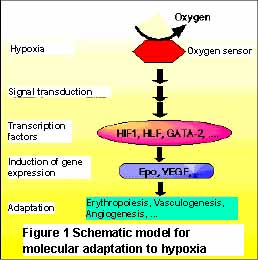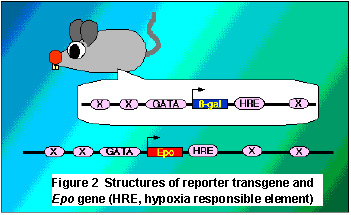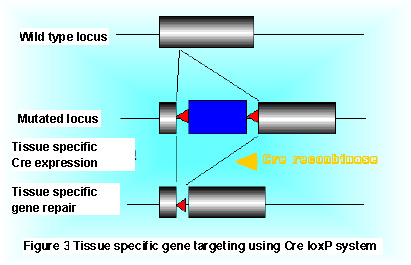

Molecular Mechanism of Adaptation to Hypoxia
Oxygen is necessary for energy production in all aerobic organisms. Paradoxically, oxygen becomes toxic if levels are not maintained within strict limits. Mammalian cells adapt to insufficient oxygen levels, termed hypoxia, by switching on genes that encode proteins responsible for re-establishing conditions of normoxia. To elucidate the molecular mechanism of adaptation to hypoxia, we are studying the transcriptional regulation of hypoxic-inducible genes using gene-manipulated mice.
 (1) Analysis of transcription factors responsive to hypoxia.
(1) Analysis of transcription factors responsive to hypoxia.Erythropoietin (Epo) is a growth factor essential for red blood cell production. Under hypoxic conditions, transcription of the Epo gene is markedly activated and the number of red blood cells is increased to maintain oxygen levels in tissues. We have reported that transcription of the Epo gene is regulated by HIF (Hypoxia inducible factor)-1, HLF (HIF-1 like factor) and GATA-2 transcription factors (a). We are trying to identify molecules that interact with these factors and to investigate the mechanism of hypoxic signal transduction.
To clarify the mechanism of Epo gene transcription, we will establish many lines of transgenic mice that express LacZ/GFP reporter constructs containing various Epo gene regulatory sequences.

We have established lines of mice bearing mutated GATA-2 and HLF genes. The HLF gene was knocked out using the Cre-loxP system. We are also trying to establish tissue-specific GATA-2 gene knockout mice.
